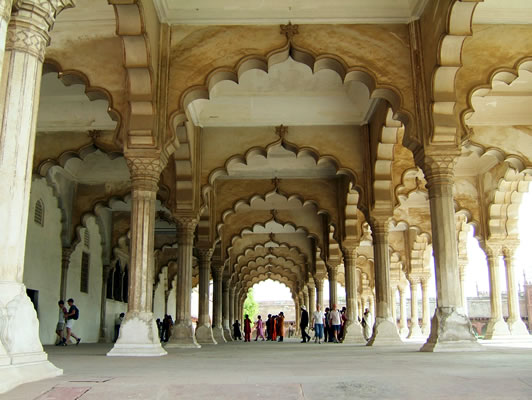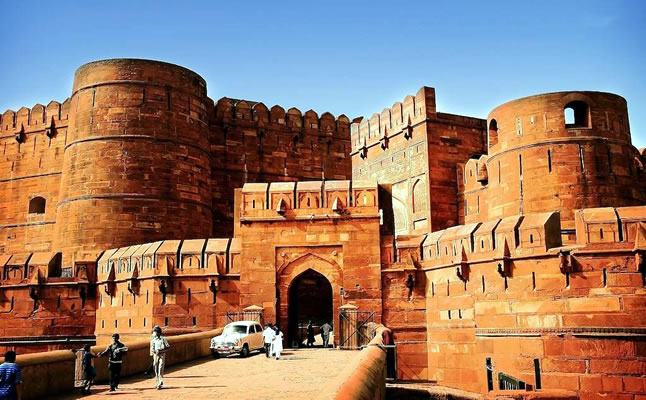Tomb of Mariam Zamani
(C. 1623-27)
Hindi Version | View Gallery |
|
[Not a valid template]Mariam Zamani was the daughter of Raja Bharmal Kachhwaha of Amer (Jaipur) and was married to Akbar in 1562 A.D. She gave birth to Salim (Jahangir) in 1569 at Fatehpur Sikri, when the title ‘Mariam Zamani’ (Compassionate to the World) was conferred upon her by Akbar. She died at Agra in 1623 and this tomb was built by her son Jahangir between 1623 and 1627 A.D. This was originally a Lodi Barahdari (Open Pavilion) which was adopted by the Mughals and converted into a tomb by making a crypt below the central compartment; reconstructing the four facades of the building with carved red sand stone panels and a Chhajja with addition of duchhattis (Mezzanine Floors) at the corners; and remaking the superstructure with chhatris and chhaparkhats. [Not a valid template]This square tomb stands in the centre of a garden. The plan consists of two through corridors at regular interval E-W and N-S from one end to the other, i.e. from every third archway, intersecting each other at right angles, dividing the interior into nine sections. A large one in the centre, four small square ones at the corners and four oblong ones in the middle of four sides massive piers have been used to support the broad arches and vaulted ceilings. Construction is in brick and mortar, finished by stucco. On each facade is an arch in the centre, set in a rectangular frame which projects forward. It is flanked, on either side, by a wing which consists of three arches and a set of double arches, one over the other, thus accommodating a duchhatti at each corner of the building. Arches are pointed. Wings are protected by chhajjas. The tomb building has three tombstones; one in the underground mortuary chamber, ostensibly on the grave; one cenotaph above it on the ground floor and one cenotaph on the terrace. [Not a valid template]Its superstructure is composed of four massive octagonal chhatris on the four corners of the building and four oblong chhaparkhats in the middle of the four sides. Each octagonal chhatri, all of red sandstone, stands majestically on a square platform. Beautiful brackets have been used to support the internal lintels and external chhajja, five on each pillar, making a total of 40 brackets in one chhatri. Each chhaparkhat is rectangular and has eight pillars with a similar cluster of brackets. These chhatris and chhaparkhats constitute the most important ornament of the whole composition. They dominate as much on facade as on superstructure. They make up a beautiful skyline and the building is complete in itself even without a dome. This mausoleum occupies an important position in the class of ‘Domeless Tombs’ of the mughals. |




